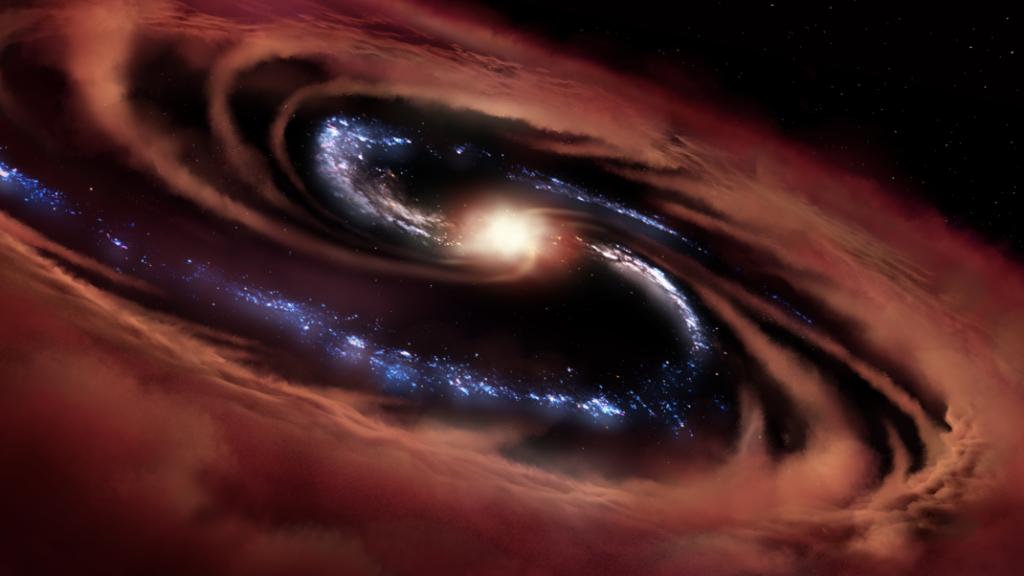It’s #BlackHoleFriday and we found a galaxy that is surviving a black hole’s feast, at least for now. 
The discovery is causing scientists to rethink their theories of galactic evolution. Learn more: https://go.nasa.gov/36cJp5y

The discovery is causing scientists to rethink their theories of galactic evolution. Learn more: https://go.nasa.gov/36cJp5y
The hungriest of black holes gobble up so much material that it glows as it spins into the black hole’s belly, forming a quasar.
Quasars are some of the brightest objects in the universe. They often outshine everything around them, blinding attempts to observe their galaxies.
Quasars are some of the brightest objects in the universe. They often outshine everything around them, blinding attempts to observe their galaxies.
Current theories predict a quasar’s intense energy heats up or expels cold gas needed to create stars, stopping star birth and ending a galaxy's life.
But in the galaxy CQ4479 — 5.25 billion light years away — the black hole is feasting while star birth continues.
But in the galaxy CQ4479 — 5.25 billion light years away — the black hole is feasting while star birth continues.
 The galaxy is creating about 100 Sun-sized stars a year.
The galaxy is creating about 100 Sun-sized stars a year.  This is forcing scientists to rethink theories on how galaxies evolve, and can help explain how massive galaxies came to be — even though the universe today is dominated by galaxies that no longer form stars.
This is forcing scientists to rethink theories on how galaxies evolve, and can help explain how massive galaxies came to be — even though the universe today is dominated by galaxies that no longer form stars.
 Our infrared observations can study star birth without being overwhelmed by the intensely luminous quasar.
Our infrared observations can study star birth without being overwhelmed by the intensely luminous quasar. Rather than directly observing the newborn stars, we detected infrared light radiating from the dust heated by the formation process.
 http://go.nasa.gov/36cJp5y
http://go.nasa.gov/36cJp5y

 Read on Twitter
Read on Twitter


